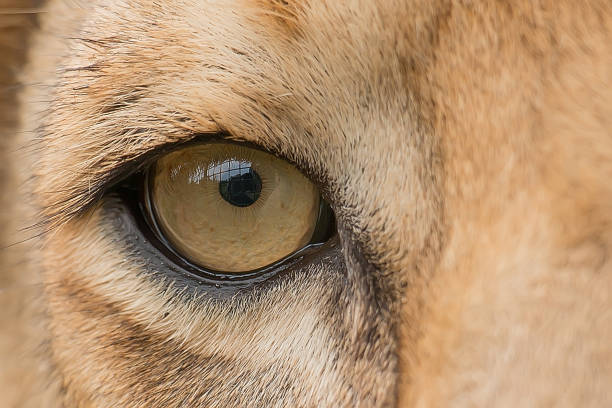A Comparison Between the Lion's Eye and the Human Eye
Throughout my years of guiding, I have encountered countless questions about animals’ anatomy, physiology, and behaviour. One question that arises frequently is about the quality of a predator like a lion’s vision versus that of a human. The following is a brief explanation of the fundamental similarities and differences.
The eyes of lions and humans, while fundamentally similar in structure, have evolved distinct features to serve the different needs of each species. Lions, as apex predators, rely heavily on their vision for hunting, especially in low-light conditions, while humans depend on their ability to perceive fine detail and colour for daily activities. These differences highlight the remarkable ways in which each species’ visual system has adapted to ensure survival and success in their respective environments.
One of the most noticeable differences between lions and humans is the position of their eyes. Lions have forward-facing eyes, a trait common to most predators, which provides binocular vision. This alignment allows the visual fields of both eyes to overlap, creating depth perception and allowing for more precise judgment of distance. This is crucial for lions, who need to calculate the distance to their prey to make an accurate strike. Humans also have forward-facing eyes, which give them binocular vision, but their visual system is more geared toward tasks requiring great detail, such as reading or working with tools, rather than for tracking and hunting prey.
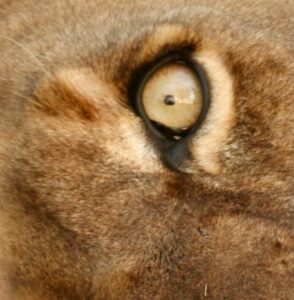
The retina, the light-sensitive layer of cells at the back of the eye, is another area where lions and humans differ significantly. Lions’ retinas are primarily rod-dominant, meaning they contain a higher concentration of rod cells that are sensitive to low light and movement. This adaptation is essential for lions, as it allows them to see in dim light, especially during the twilight hours of dawn and dusk when they are most active. Additionally, lions possess a tapetum lucidum, a reflective layer of cells behind the retina that enhances night vision by reflecting light through the photoreceptors. This feature allows lions to see more clearly in low-light conditions and gives their eyes the distinctive “glow” when illuminated in the dark. On average their vision is 6 to 8 times better than that of a human at low light conditions.
Humans, on the other hand, have cone-dominant retinas, with a much higher concentration of cone cells, which are responsible for colour vision and sharp visual acuity in bright light. Humans possess three types of cone cells (S-cones, M-cones, and L-cones), enabling trichromatic vision, which allows for the perception of a wide spectrum of colours. This ability to distinguish fine details and colours is vital for activities like identifying objects, reading, and navigating complex environments.
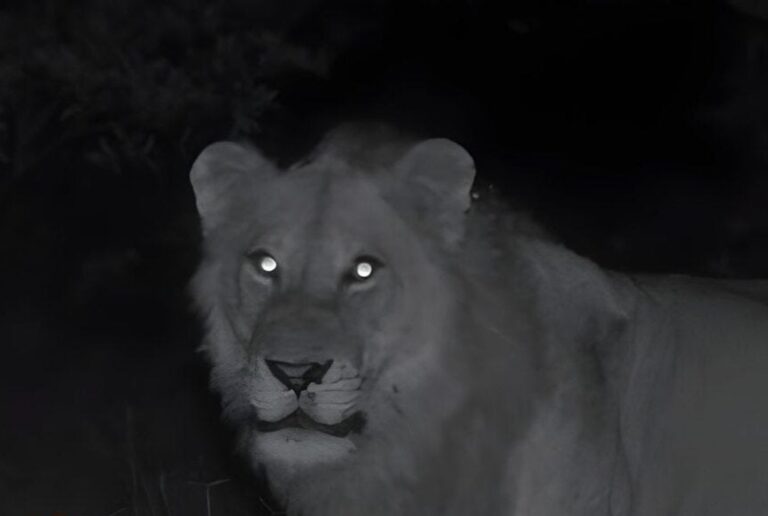
Another key difference between the eyes of lions and humans is in pupil function. Lions have round pupils that can dilate significantly, allowing for maximum light intake in low-light environments. This wide dilation is particularly useful for lions during the crepuscular hours when they hunt at dawn and dusk. In addition, lions have white markings below their eyes. These markings facilitate to reflect more light into their eyes from their surroundings. Humans also have round pupils, but they do not dilate as widely as those of lions, limiting their ability to see well in dim conditions.
When it comes to motion detection, lions and humans are adapted to their specific needs. Lions are highly sensitive to even the smallest movement due to the high number of rod cells in their retinas. This enables them to detect prey even in low light or when the prey is trying to remain still. Humans, on the other hand, have superior visual acuity, especially in central vision, thanks to the concentration of cone cells in the fovea. This gives humans the ability to focus on fine details and precise tasks, such as reading, writing, and using tools.
The field of view also differs between the two species. Lions have a narrower field of view (approximately 120-140 degrees), which is a trade-off for the enhanced depth perception and binocular vision they need for hunting. This narrower field of view allows them to focus on their prey and judge distances with accuracy. Humans have a wider field of view of about 180 degrees, providing better peripheral vision, which helps with awareness of the surrounding environment. This wider field of view helps humans navigate complex spaces and detect potential threats from a broader range.
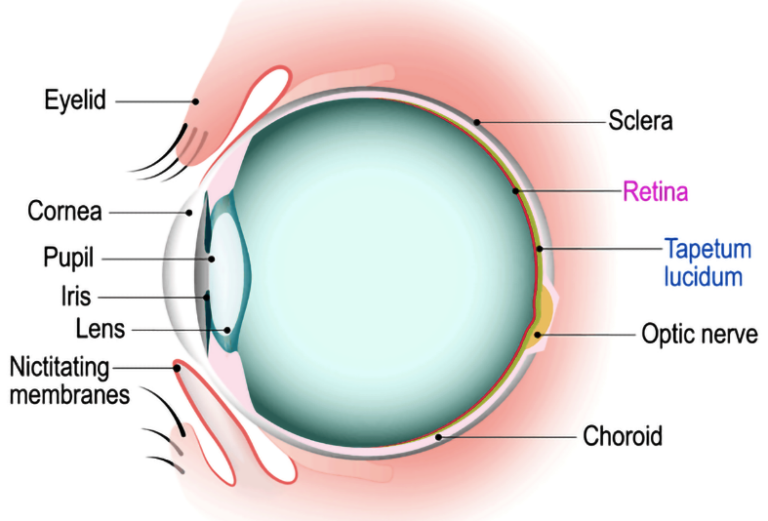
Finally, colour vision sets the two species apart. Lions have dichromatic vision, meaning they can primarily perceive shades of blue and green and have limited ability to distinguish reds and other colours. This is sufficient for their needs as hunters, as they rely more on detecting movement and contrast rather than distinguishing a wide range of colours. With their trichromatic vision, humans can perceive a full spectrum of colours, which is essential for tasks requiring fine detail and colour differentiation, such as recognizing objects or navigating their environment.
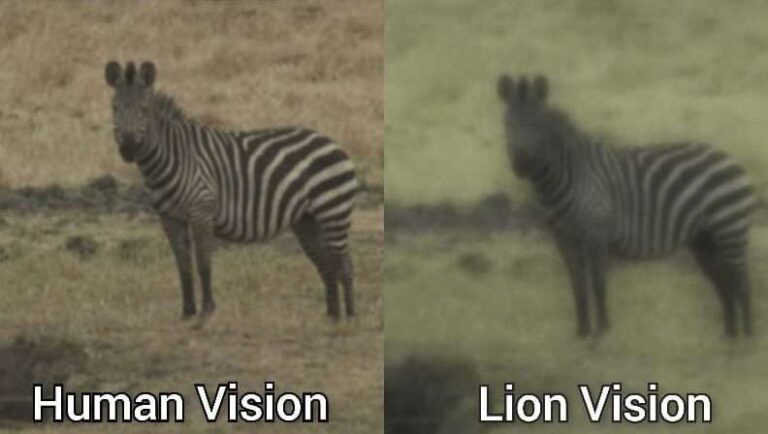
In conclusion, while both lions and humans share a similar basic eye structure, their visual systems are highly specialized to meet the demands of their respective lifestyles. Lions are adapted for low-light vision, motion detection, and depth perception, which are critical for hunting at dawn, dusk, and night. Their rod-dominant retinas, tapetum lucidum, and wide pupil dilation give them a distinct advantage in low-light conditions. Humans, by contrast, excel in colour vision, visual acuity, and detailed perception, which are crucial for daily activities in well-lit environments. These differences highlight how vision has evolved in response to the specific needs of each species, reflecting the diverse ways in which animals interact with their surroundings.

